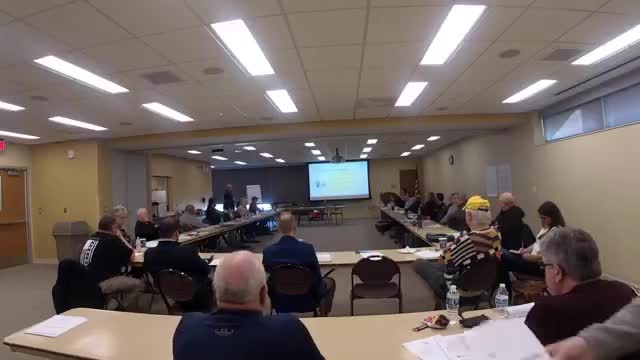County Drug Court Implements New Strategies to Combat Drug Use and Homelessness
February 22, 2025 | Tazewell County, Illinois
This article was created by AI summarizing key points discussed. AI makes mistakes, so for full details and context, please refer to the video of the full meeting. Please report any errors so we can fix them. Report an error »

Tazewell County officials are ramping up efforts to combat drug-related issues and homelessness, as highlighted in a recent strategic planning meeting. With over 900 drug cases filed in the past two years, the county is focusing on a multi-faceted approach that includes both enforcement and prevention.
County leaders emphasized the importance of collaboration among various departments, including court services, probation, and the sheriff's office, to tackle the drug crisis effectively. "It's a real criminal justice team," one official stated, underscoring that addressing drug issues requires a united front.
In a proactive move, Tazewell County has hired a drug counselor to work with youth, aiming to prevent drug use before it starts. This initiative is part of a broader strategy that also includes a drug court program, which currently serves 40 participants. Officials noted that while the program could accommodate more individuals, staffing constraints limit its capacity.
Mental health support is another critical component of the county's strategy. A new psychiatrist has been brought in to assist probationers, addressing the intersection of mental health and criminal behavior. However, officials acknowledged that the challenges are compounded by a lack of resources at the state level, particularly in mental health services.
On the homelessness front, Tazewell County has seen a reduction in homeless individuals, thanks in part to the hiring of a social worker in Pekin. This effort has helped connect people to housing and resources, although officials noted that some individuals resist assistance due to mental health issues.
Looking ahead, county leaders are optimistic about the potential for reduced drug use and homelessness, especially with anticipated changes at the southern border that may disrupt drug trafficking. However, they also recognize the need for sustainable funding solutions, suggesting that public-private partnerships may be essential in addressing these ongoing challenges.
As Tazewell County continues to navigate these complex issues, the focus remains on effective resource allocation and community collaboration to foster a safer and healthier environment for all residents.
County leaders emphasized the importance of collaboration among various departments, including court services, probation, and the sheriff's office, to tackle the drug crisis effectively. "It's a real criminal justice team," one official stated, underscoring that addressing drug issues requires a united front.
In a proactive move, Tazewell County has hired a drug counselor to work with youth, aiming to prevent drug use before it starts. This initiative is part of a broader strategy that also includes a drug court program, which currently serves 40 participants. Officials noted that while the program could accommodate more individuals, staffing constraints limit its capacity.
Mental health support is another critical component of the county's strategy. A new psychiatrist has been brought in to assist probationers, addressing the intersection of mental health and criminal behavior. However, officials acknowledged that the challenges are compounded by a lack of resources at the state level, particularly in mental health services.
On the homelessness front, Tazewell County has seen a reduction in homeless individuals, thanks in part to the hiring of a social worker in Pekin. This effort has helped connect people to housing and resources, although officials noted that some individuals resist assistance due to mental health issues.
Looking ahead, county leaders are optimistic about the potential for reduced drug use and homelessness, especially with anticipated changes at the southern border that may disrupt drug trafficking. However, they also recognize the need for sustainable funding solutions, suggesting that public-private partnerships may be essential in addressing these ongoing challenges.
As Tazewell County continues to navigate these complex issues, the focus remains on effective resource allocation and community collaboration to foster a safer and healthier environment for all residents.
View full meeting
This article is based on a recent meeting—watch the full video and explore the complete transcript for deeper insights into the discussion.
View full meeting
